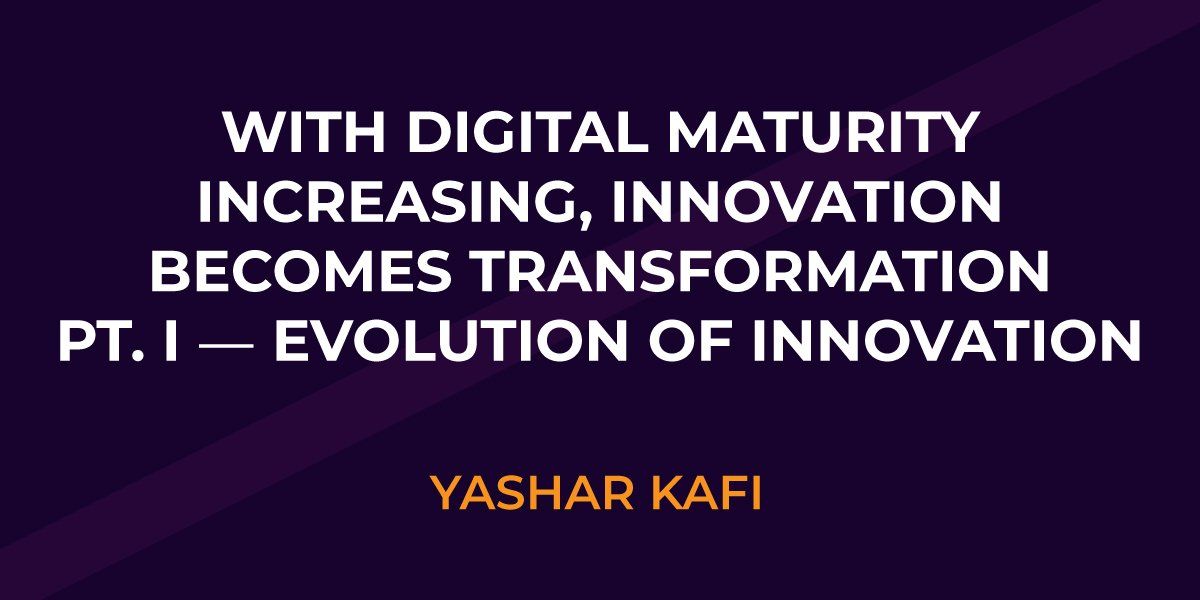With Digital Maturity Increasing, Innovation Becomes Transformation Pt. I ─ Evolution of Innovation
Innovation has always been critical for business evolution. Organizations that prioritize innovation and transformation become industry-leaders. They have the confidence to take risks, leading the way based upon their vision for the future.
Today’s business landscape is an increasingly competitive and hastily advancing playing-field. Innovating has become a requirement for companies that want to win and hold a leading position in their industry. In the fight for global dominance, such as between Apple in the US and Huawei in China, the challenge is even greater. As competition grows globally, corporate leaders cannot produce enough innovative ideas on their own. As a result, companies are beginning to create innovative cultures that involve everyone in the organization.
The evolution of innovation in any sector is unique and complicated, but it usually comes down to three critical elements: ideas, innovation, and implementation.
Ideas
The genesis of truly innovative ideas may come from the least likely of places. During the Italian Renaissance, Leonardo da Vinci was inspired by a Chinese toy with a spinning rotor. It inspired him to create 100 illustrations demonstrating his theories on flight. One, in particular, was of The Ornithopter , a flying machine that would allow a man to fly. Although da Vinci never took to the skies, his sketch made a critical contribution to science in that it did not simply strap wings to a human body to enable flight.
Innovation
In the early 1900s, young Igor Ivanovich Sikorsky was introduced to the genius of Leonardo da Vinci by his mother. His father encouraged him to pursue his natural abilities with the sciences. Around the age of twelve, Sikorsky designed and created a rubber band-powered helicopter. By 1923, Sikorsky had moved to the United States and founded Sikorsky Aircraft Corporation, where, influenced by the ideas of Leonardo da Vinci, he pioneered the typical rotor design seen on helicopters the world over to this very day.
Implementation
Sikorsky used his ideas, founded on the principles and genius of Leonardo da Vinci, and designed the very first modern helicopter: the mass-produced Sikorsky R-4 . By 1942, Sikorsky had achieved ‘free-flight,’ which allowed his helicopters to move in all directions. Helicopters have, since their introduction, become a staple form of transportation for government, military, public services, and more. This idea started as a small acorn and grew into a mighty oak, from concept, through innovation, to implementation.
Helicopter pilots were taught to embrace the new form of flight ─ it was different from flying airplanes, but people adapt to change and overcome challenges when there is a culture of innovation and transformation in their organization. The same innovative culture is just as valuable for standard office-based organizations. It took most companies today on a journey from floppy disks, to USB memory sticks, and today we achieve the same results by uploading our work to the cloud.
If your organization is looking to improve their digital maturity, the company needs to embrace a culture of innovation. If your staff live and breathe creative thought, and have the freedom to share their ideas openly, you will likely see a huge change take place. Your organization will adapt to change faster, employees will look to solve their own problems, and there will be a mental shift that changes the trajectory of the products or services you offer.




